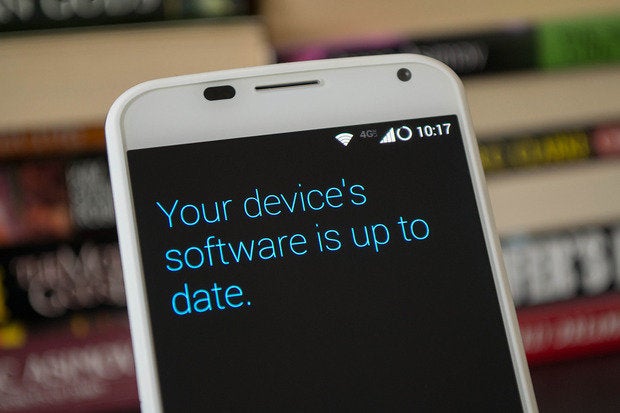Google is hailing automatic updates as one of Android N’s new features, but it won’t help address the biggest problems with the Android ecosystem: late, inconsistent updates.
Android N devices will be able to update the operating system in the background as they become available. Users won’t have to tap Accept to initiate the process as they do today, nor will they have to wait for the update to complete before they can use the device again. Android N would download and install the software automatically, and when the user reboots the device, it will run the new version.
But "as they become available" is the key caveat -- that's still up to the device makers and the carriers. The initial description of the automatic updates feature at Google's recent I/O conference made it seem like Google was going to bypass the carriers and manufacturers and push software updates directly to user devices, as Apple has always done for iOS. That's not the case.
Device makers rarely update older Android devices, and when they do it can take weeks or months. The carriers add more weeks and months to that process to validate the changes for their network.
Google will release updates only for its Nexus devices, which are sold mainly to developers and "pure Android" fans. Despite pledges from carriers and manufacturers last fall to regularly roll out software updates, the reality is that a mere handful of the latest non-Nexus models are eligible to receive updates.
As a result, we'll see the current pattern continue, where only a small percentage of devices get updated, letting security vulnerabilities stay widely available for exploitation. A significant portion of Android users are vulnerable to potential attacks, by virtue of the fact that their devices are not up to date with the latest security fixes.
There is little point to having regular monthly security bulletins, as Google has promised, fixing critical flaws in the Mediaserver component or hardware modules if those fixes don’t make it on to a majority of user devices because they are still running old Android versions.
Nearly a fifth of Android devices still run Jelly Bean (Android 4.x), released back in 2012. About two-thirds of Android users are on KitKat (Android 4.4) or Lollipop (Android 5.x), and only 7.5 percent of users have devices running last year’s Marshmallow (Android 6.x). Contrast that with iOS, with Apple claiming 75 percent of iPhones and iPads had upgraded to iOS 9 within four months of its September 2015 release.
This minor update change in Android N is disappointing and a missed opportunity for Google.






